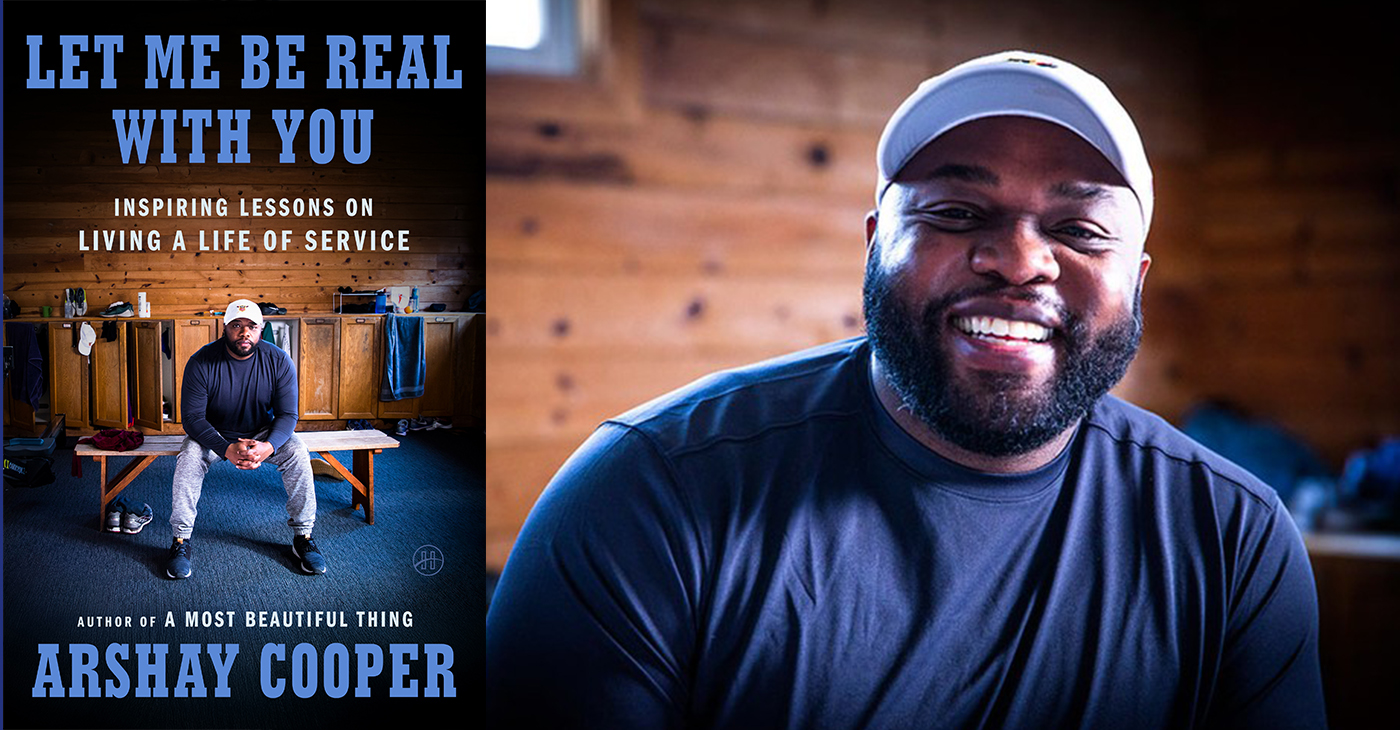Advice
Tips to be Fit: Most germs won’t hurt us, but 1,400 can
THE PHILADELPHIA TRIBUNE — Did you know there are over 65,000 known germs, but only about 1,400 cause disease? The four major types of germs are bacteria, viruses, fungi and protozoa. They can infect our bodies and cause disease. There is a difference between infection and disease. We can be infected without being diseased.
Did you know there are over 65,000 known germs, but only about 1,400 cause disease?
The four major types of germs are bacteria, viruses, fungi and protozoa. They can infect our bodies and cause disease. There is a difference between infection and disease. We can be infected without being diseased.
An infection is the first step, which occurs when bacteria, viruses or other microbes that cause disease enter our body and begin to multiply. Disease is when the cells in our body are damaged as a result of the infection, and symptoms of an illness appear.
Most germs won’t hurt us. Our immune system protects us against infections. But germs may mutate and breach the immune system. Knowing how germs work will reduce your risk of infection.
Bacteria are one-celled organisms. They are visible only with a microscope. Not all bacteria are harmful. Some bacteria live in our body and are helpful, such as Lactobacillus acidophilus, which lives in our intestines and helps us digest food, destroys some disease-causing organisms and provides nutrients.
Disease-causing bacteria will produce toxins that can damage cells and make you ill. Some bacteria directly invade and damage cell tissues. Some infections caused by bacteria include strep throat, tuberculosis and urinary tract infections.
Viruses are much smaller than our cells. Viruses are organisms that contain only genetic material. To reproduce, viruses invade cells in our bodies and change how our cells work. Most host cells are eventually destroyed during this process, which can kill us.
Viruses are responsible for causing numerous diseases, including AIDS, the common cold, Ebola hemorrhagic fever, genital herpes, influenza, measles, chickenpox and shingles.
Antibiotics for bacteria have no effect on viruses.
There are many varieties of fungi. Fungi are organisms that are reproduced by spores. We eat a number of them, such as mushrooms. The mold that forms the blue or green veins in some types of cheese are also fungi. So is yeast, the ingredient that makes bread rise.
Some fungi can also cause illness. Fungi are also responsible for skin conditions such as athlete’s foot and ringworm.
Protozoans
A protozoan is a single-celled organism that acts like a tiny animal. Protozoans eat other microbes for food. A few types of protozoans are found in our intestinal tract and are harmless.
Protozoans spend part of their life cycle outside the host. Protozoans live in food, soil, water and insects. Some protozoans invade our bodies through food or water we consume.
Some cause diseases such as giardia, malaria and toxoplasmosis. The protozoan that causes malaria is transmitted by a mosquito.
Infectious diseases
An easy way to contract most infectious diseases is by coming in contact with a person, animal or object that has the infection. Three ways infectious diseases can be spread through direct contact are:
Person to person: This is the most common way for infectious diseases to spread is when a person infected with the bacterium or virus touches, kisses, coughs on or sneezes on someone who isn’t infected. The germs can also spread through the exchange of body fluids from sexual contact. People who pass germs may have no symptoms of their disease.
Animal to person: Getting bitten or scratched by an infected animal can make you sick. It can be fatal in extreme situations. Handling animal waste can make you sick. You can acquire a toxoplasmosis infection by scooping your cat’s litter.
Mother to unborn child: A pregnant woman can pass germs that cause infectious diseases to her unborn baby. The germs can pass through the placenta connecting mother and baby. Germs in the vagina can be transmitted to the baby during birth.
Bacteria, viruses, fungi and protozoa can enter our bodies through:
- Skin contact or injuries.
- Inhaling airborne germs.
- Consuming contaminated food or water.
- Tick or mosquito bites.
- Sexual contact.
You should get medical care if you suspect that you have an infection and you have experienced any of the following:
- An animal or human bite
- Difficulty breathing
- A cough lasting longer than a week.
- Periods of rapid heartbeat.
- A rash, especially if accompanied by a fever.
- Blurred vision or other difficulty seeing.
- Persistent vomiting.
- An unusual or severe headache.
- Reducing risk of infection
The CDC recommends the following to help reduce your risk of becoming infected:
Wash your hands. This is especially important before and after preparing food or drinks, before eating or drinking, after using the toilet, and after removing soiled clothes or shoes. Try not to touch your eyes, nose or mouth with your hands, as that’s a common way germs enter the body. Soap and water work well to kill germs. Wash for at least 20 seconds and rub your hands briskly. Disposable hand wipes or gel sanitizers also work well. Gel sanitizers and hand wipes should be 70% alcohol-based.
Get vaccinated. Immunization can drastically reduce your chances of contracting many diseases. Make sure to keep up to date on your recommended vaccinations, as well as your children’s.
Stay home when ill. Don’t go to work if you are vomiting, have diarrhea or have a fever. Don’t send your child to school if he or she has these signs and symptoms, either.
Prepare food safely. Keep counters and other kitchen surfaces clean when preparing meals. Cook foods to the proper temperature using a food thermometer to check for doneness. For ground meats, that means at least 160 degrees F (71 C); for poultry, 165 F (74 C); and for most other meat, at least 145 F (63 C). In addition, promptly refrigerate leftovers. Don’t let cooked foods remain at room temperature for extended periods of time.
Practice safe sex. Always use condoms if you or your partner has a history of sexually transmitted infections or high-risk behavior.
Don’t share personal items. Use your own toothbrush, comb and razor. Avoid sharing drinking glasses or dining utensils.
Travel wisely. If you’re traveling out of the country, talk to your doctor about any special vaccinations.
If you work out in a gym, be careful. You are exposed to a lot of people. You are using equipment that was just used. Clean the padding before you use it. More than 50% of healthy persons have Staphylococcus aureus living in or on their nasal passages, throats, hair and skin.
Swimming can be dangerous, too. The average swimmer contributes at least 0.14 grams of fecal material to the water within the first 15 minutes of entering the pool. Showering with soap before swimming helps stop the spread of germs by removing fecal material from the body.
You should also make sure your gym has good air circulation. We can’t wash the air in a gym, but the exchange of air should be good.
Pets and other animals
Got a pet? Be careful. To reduce the risk of getting sick from germs your pets may carry, always wash your hands after:
• Touching or playing with your pet.
• Feeding your pet or handling pet food.
• Handling pet habitats or equipment (cages, tanks, toys, food and water dishes, etc.)
• Cleaning up after pets.
• Leaving areas where animals live (coops, barns, stalls, etc.), even if you did not touch an animal.
Going to the zoo this season? Try to make it safe:
• Don’t walk and eat. Your hands will touch a lot of contaminated objects.
• Don’t let your little one use a pacifier. They touch that pacifier with everything. They may even share it with an animal.
• Wipe off any seating or table you use in the zoo.
• Don’t feed the animals from your hand.
• If you have an open wound, cover it completely.
• Try not to come into contact with any animal waste. It’s teaming with germs.
This article originally appeared in The Philadelphia Tribune.
Advice
BOOK REVIEW: Let Me Be Real With You
At first look, this book might seem like just any other self-help offering. It’s inspirational for casual reader and business reader, both, just like most books in this genre. Dig a little deeper, though, and you’ll spot what makes “Let Me Be Real With You” stand out.

By Terri Schlichenmeyer
Author: Arshay Cooper, Copyright: c.2025, Publisher: HarperOne, SRP: $26.00, Page Count: 40 Pages
The hole you’re in is a deep one.
You can see the clouds above, and they look like a storm; you sense the wind, and it’s cold. It’s dark down there, and lonesome, too. You feel like you were born there — but how do you get out of the deep hole you’re in? You read the new book “Let Me Be Real With You” by Arshay Cooper. You find a hand-up and bring someone with you.
In the months after his first book was published, Cooper received a lot of requests to speak to youth about his life growing up on the West Side of Chicago, his struggles, and his many accomplishments. He was poor, bullied, and belittled, but he knew that if he could escape those things, he would succeed. He focused on doing what was best, and right. He looked for mentors and strove to understand when opportunities presented themselves.
Still, his early life left him with trauma. Here, he shows how it’s overcome-able.
We must always have hope, Cooper says, but hope is “merely the catalyst for action. The hope we receive must transform into the hope we give.”
Learn to tell your own story, as honestly as you know it. Be open to suggestions, and don’t dismiss them without great thought. Know that masculinity doesn’t equal stoicism; we are hard-wired to need other people, and sharing “pain and relatability can dissipate shame and foster empathy in powerful ways.”
Remember that trauma is intergenerational, and it can be passed down from parent to child. Let your mentors see your potential. Get therapy, if you need it; there’s no shame in it, and it will help, if you learn to trust it. Enjoy the outdoors when you can. Learn self-control. Give back to your community. Respect your financial wellness. Embrace your intelligence. Pick your friends and relationships wisely. “Do it afraid.”
And finally, remember that “You were born to soar to great heights and rule the sky.”
You just needed someone to tell you that.
At first look, this book might seem like just any other self-help offering. It’s inspirational for casual reader and business reader, both, just like most books in this genre. Dig a little deeper, though, and you’ll spot what makes “Let Me Be Real With You” stand out.
With a willingness to discuss the struggles he tackled in the past, Cooper writes with a solidly honest voice that’s exceptionally believable, and not one bit dramatic. You won’t find unnecessarily embellished stories or tall tales here, either; Cooper instead uses his real experiences to help readers understand that there are few things that are truly insurmountable. He then explains how one’s past can shape one’s future, and how today’s actions can change the future of the world.
“Let Me Be Real With You” is full of motivation, and instruction that’s do-able for adults and teens. If you need that, or if you’ve vowed to do better this coming year, it might help make you whole.
Advice
Support Your Child’s Mental Health: Medi-Cal Covers Therapy, Medication, and More

Advertorial
When children struggle emotionally, it can affect every part of their lives — at home, in school, with friends, and even their physical health. In many Black families, we’re taught to be strong and push through. But our kids don’t have to struggle alone. Medi-Cal provides mental health care for children and youth, with no referral or diagnosis required.
Through California Advancing and Innovating Medi-Cal (CalAIM), the state is transforming how care is delivered. Services are now easier to access and better connected across mental health, physical health, and family support systems. CalAIM brings care into schools, homes, and communities, removing barriers and helping children get support early, before challenges escalate.
Help is Available, and it’s Covered
Under Medi-Cal, every child and teen under age 19 has the right to mental health care. This includes screenings, therapy, medication support, crisis stabilization, and help coordinating services. Parents, caregivers, and children age 12 or older can request a screening at any time, with no diagnosis or referral required.
Medi-Cal’s Mental Health and Substance Use Disorder Program
For children and youth with more serious mental health needs, including those in foster care or involved in the justice system, Medi-Cal offers expanded support, including:
- Family-centered and community-based therapy to address trauma, behavior challenges, or system involvement.
- Wraparound care teams that help keep children safely at home or with relatives.
- Activity funds that support healing through sports, art, music, and therapeutic camps.
- Initial joint behavioral health visits, where a mental health provider and child welfare worker meet with the family early in a case.
- Child welfare liaisons in Medi-Cal health plans who help caregivers and social workers get services for children faster
Keeping Kids Safe from Opioids and Harmful Drugs
DHCS is also working to keep young people safe as California faces rising risks from opioids and counterfeit pills. Programs like Elevate Youth California and Friday Night Live give teens mentorship, leadership opportunities, and positive outlets that strengthen mental well-being.
Through the California Youth Opioid Response, families can learn how to avoid dangerous substances and get treatment when needed. Song for Charlie provides parents and teens with facts and tools to talk honestly about mental health and counterfeit pills.
DHCS also supports groups like Young People in Recovery, which helps youth build skills for long-term healing, and the Youth Peer Mentor Program, which trains teens with lived experience to support others. These efforts are part of California’s strategy to protect young people, prevent overdoses, and help them make healthier choices.
Support for Parents and Caregivers
Children thrive when their caregivers are supported. Through CalAIM’s vision of whole-person care, Medi-Cal now covers dyadic services, visits where a child and caregiver meet together with a provider to strengthen bonding, manage stress, and address behavior challenges.
These visits may include screening the caregiver for depression or anxiety and connecting them to food, housing, or other health-related social needs, aligning with CalAIM’s Community Supports framework. Notably, only the child must be enrolled in Medi-Cal to receive dyadic care.
Family therapy is also covered and can take place in clinics, schools, homes, or via telehealth, reflecting CalAIM’s commitment to flexible, community-based care delivery.
Additionally, BrightLife Kids offers free tools, resources, and virtual coaching for caregivers and children ages 0–12. Families can sign up online or through the BrightLife Kids app. No insurance, diagnosis, or referral is required.
For teens and young adults ages 13–25, California offers Soluna, a free mental health app where young people can chat with coaches, learn coping skills, journal, or join supportive community circles. Soluna is free, confidential, available in app stores, and does not require insurance.
CalHOPE also provides free emotional support to all Californians through a 24/7 support line at (833) 317-HOPE (4673), online chat, and culturally responsive resources.
Support at School — Where Kids Already Are
Schools are often the first place where emotional stress is noticed. Through the Children and Youth Behavioral Health Initiative (CYBHI), public schools, community colleges, and universities can offer therapy, counseling, crisis support, and referrals at no cost to families.
Services are available during school breaks and delivered on campus, by phone or video, or at community sites. There are no copayments, deductibles, or bills.
Medi-Cal Still Covers Everyday Care
Medi-Cal continues to cover everyday mental health care, including therapy for stress, anxiety, depression, or trauma; medication support; crisis stabilization; hospital care when needed; and referrals to community programs through county mental health plans and Medi-Cal health plans.
How to Get Help
- Talk to your child’s teacher, school counselor, or doctor.
- In Alameda County call 510-272-3663 or the toll-free number 1-800-698-1118 and in San Francisco call 855-355-5757 to contact your county mental health plan to request an assessment or services.
- If your child is not enrolled in Medi-Cal, you can apply at com or my.medi-cal.ca.gov.
- In a mental health emergency, call or text 988, the Suicide and Crisis Lifeline.
Every child deserves to grow up healthy and supported. Medi-Cal is working to transform care so it’s accessible, equitable, and responsive to the needs of every family.
Advice
COMMENTARY: If You Don’t Want Your ‘Black Card’ Revoked, Watch What You Bring to Holiday Dinners
From Thanksgiving to Christmas to New Year’s Day, whether it’s the dining room table or the bid whist (Spades? Uno, anyone?) table, your card may be in danger.

By Wanda Ravernell
Post Staff
From the fourth week of November to the first week in January, if you are of African descent, but particularly African American, certain violations of cultural etiquette will get your ‘Black card’ revoked.
From Thanksgiving to Christmas to New Year’s Day, whether it’s the dining room table or the bid whist (Spades? Uno, anyone?) table, your card may be in danger.
It could take until Super Bowl Sunday for reinstatement.
I don’t know much about the card table, but for years I was on probation by the ‘Aunties,’ the givers and takers of Black cards.
How I Got into Trouble
It was 1970-something and I was influenced by the health food movement that emerged from the hippie era. A vegetarian (which was then considered sacrilegious by most Black people I knew) prepared me a simple meal: grated cheese over steamed broccoli, lentils, and brown rice.
I introduced the broccoli dish at the Friday night supper with my aunt and grandfather. She pronounced the bright green broccoli undone, but she ate it. (I did not, of course, try brown rice on them.)
I knew that I would be allowed back in the kitchen when she attempted the dish, but the broccoli had been cooked to death. (Y’all remember when ALL vegetables, not just greens, were cooked to mush?)
My Black card, which had been revoked was then reattained because they ate what I prepared and imitated it.
Over the decades, various transgressions have become normalized. I remember when having a smoked turkey neck instead of a ham hock in collard greens was greeted with mumblings and murmurings at both the dining room and card tables. Then came vegan versions with just olive oil (What? No Crisco? No bacon, at least?) and garlic. And now my husband stir fries his collards in a wok.
But No Matter How Things Have Changed…
At holiday meals, there are assigned tasks. Uncle Jack chopped raw onions when needed. Uncle Buddy made the fruit salad for Easter. My mother brought the greens in winter, macaroni salad in summer. Aunt Deanie did the macaroni and cheese, and the great aunts, my deceased grandmother’s sisters, oversaw the preparation of the roast beef, turkey, and ham. My father, if he were present, did the carving.
These designations/assignments were binding agreements that could stand up in a court of law. Do not violate the law of assignments by bringing some other version of a tried-and-true dish, even if you call it a new ‘cheese and noodle item’ to ‘try out.’ The auntie lawgivers know what you are trying to do. It’s called a menu coup d’état, and they are not having it.
The time for experiments is in your own home: your spouse and kids are the Guinea pigs.
My mother’s variation of a classic that I detested from that Sunday to the present was adding crushed pineapple to mashed sweet potatoes. A relative stops by, tries it, and then it can be introduced as an add-on to the standard holiday menu.
My Aunt Vivian’s concoctions from Good Housekeeping or Ladies’ Home Journal magazine also made it to the Black people’s tables all over the country in the form of a green bean casserole.
What Not to Do and How Did It Cross Your Mind?
People are, of all things holy, preparing mac ‘n’ cheese with so much sugar it tastes like custard with noodles in it.
Also showing up in the wrong places: raisins. Raisins have been reported in the stuffing (makes no sense unless it’s in a ‘sweet meats’ dish), in a pan of corn bread, and – heresy in the Black kitchen – the MAC ‘n’ CHEESE.
These are not mere allegations: There is photographic evidence of these Black card violations, but I don’t want to defame witnesses who remained present at the scene of the crimes.
The cook – bless his/her heart – was probably well-meaning, if ignorant. Maybe they got the idea from a social media influencer, much like Aunt Viv got recipes from magazines.
Thankfully, a long-winded blessing of the food at the table can give the wary attendee time to locate the oddity’s place on the table and plan accordingly.
But who knows? Innovation always prevails, for, as the old folks say, ‘waste makes want.’ What if the leftovers were cut up, dipped in breadcrumbs and deep fried? The next day, that dish might make it to the TV tray by the card table.
An older cousin – on her way to being an Auntie – in her bonnet, leggings, T-shirt, and bunny slippers and too tired to object, might try it and like it….
And if she ‘rubs your head’ after eating it, the new dish might be a winner and (Whew!) everybody, thanks God, keeps their Black cards.
Until the next time.
-

 #NNPA BlackPress4 weeks ago
#NNPA BlackPress4 weeks agoLIHEAP Funds Released After Weeks of Delay as States and the District Rush to Protect Households from the Cold
-

 Alameda County4 weeks ago
Alameda County4 weeks agoSeth Curry Makes Impressive Debut with the Golden State Warriors
-

 #NNPA BlackPress4 weeks ago
#NNPA BlackPress4 weeks agoSeven Steps to Help Your Child Build Meaningful Connections
-

 #NNPA BlackPress4 weeks ago
#NNPA BlackPress4 weeks agoSeven Steps to Help Your Child Build Meaningful Connections
-

 #NNPA BlackPress4 weeks ago
#NNPA BlackPress4 weeks agoTrinidad and Tobago – Prime Minister Confirms U.S. Marines Working on Tobago Radar System
-

 #NNPA BlackPress4 weeks ago
#NNPA BlackPress4 weeks agoThanksgiving Celebrated Across the Tri-State
-

 #NNPA BlackPress4 weeks ago
#NNPA BlackPress4 weeks agoTeens Reject Today’s News as Trump Intensifies His Assault on the Press
-

 #NNPA BlackPress4 weeks ago
#NNPA BlackPress4 weeks agoBreaking the Silence: Black Veterans Speak Out on PTSD and the Path to Recovery























































